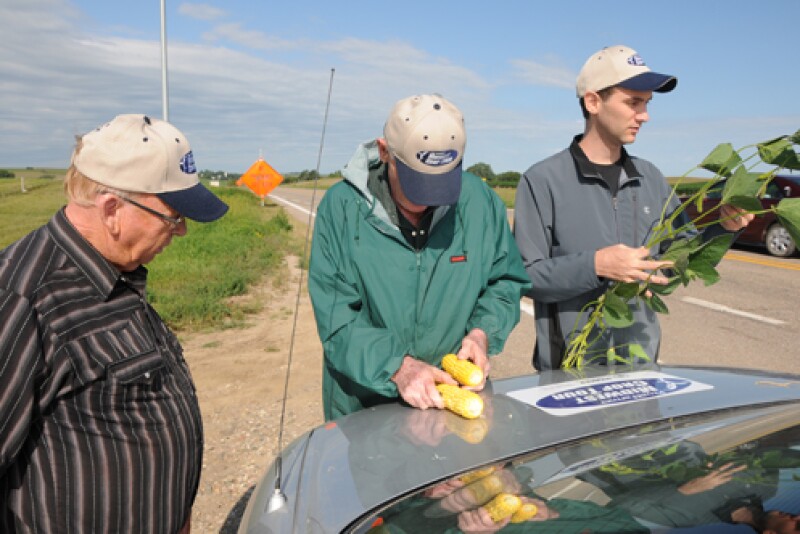The South Dakota portion of the Western Leg of the Pro Farmer Crop Tour is complete and we’ve got a good start on Nebraska.
It’s a good corn crop in South Dakota. And it’s a good bean crop. Neither crop is without risk between now and the end of kernel and pod fill because of the disease-ripe environment, but both crops have done a lot of the heavy lifting to build good yields.
But not a record yield for corn. The 83 corn samples collected generated an average yield calculation of 174.2 bu. per acre, up 11.3% from last year’s tour and 21% ahead of the three-year tour average. The 2020 Crop Tour through South Dakota generated an average corn yield of 179.24 and 2018 came in at 178.01. So it’s a very good crop, but probably not a record.
The 11.3% increase from last year’s tour compares to the 2.4% increase from last year’s USDA’s final to this year’s USDA Aug. 1 estimate. We’ve got the same trend, but it looks to me like USDA can find a few more bushels for its yield estimate. The Ohio corn yield came in up 1.13% from year-ago compared to USDA’s expected 10.7% increase. Maybe all we did today was shuffle some bushels around the Corn Belt.
This year’s tour in South Dakota found an average ear count in 60-foot of row of 90.84 ears, up 7.6% from last year. The average grain length is 7.08 inches, up 4.4% from year-ago. The number of kernel rows around the ear averaged 16.02, up 0.5% from last year.
The factor that separates 2025 from any tour I’ve done here since 1998 is the moisture profile. I’m sure I’m probably forgetting a year that had this much moisture available in the third week of August, but I just don’t recall it. In fact, I don’t remember the moisture estimate we ask scouts to estimate at each stop ever averaging about 5 in any state in any year, but South Dakota came in at 5.53 this year – 81% ahead of the three-year average.
There is concern that for soybeans that might be too much of a good thing... and it could turn out that way. But right now, the South Dakota bean crop seems to be on its way to a solid finish. There are some diseases blooming (SDS, brown stem rot and white mold) that could make the bean crop look a lot more different than the snapshot we took today, but it’s a good bean crop.
The average number of beans in a 3’X3’ square was 1188.45, up 15.85% from last year and 22.5% ahead of the three-year average. Combined with a 5.53 average on the moisture index, the crop has enough of the factory up and running to make a good yield.
By the way, the soil moisture index is a 1-6 scare:
- 1 is “very dry based on current conditions and history... medium to large crack in soil”
- 5 is “moist at the surface and all the way down”
- 6 is “saturated soils” (standing water in depressions)
We got a good start on Nebraska and covered everything from the Missouri River, north of the Platte River and west to Grand Island. I didn’t see a pivot running until about 30 miles east of Grand Island and many pivot-irrigated fields don’t have a single track cut through the corn or beans. Obviously, couldn’t tell the difference between irrigated and dryland corn since even the irrigated crop has been rain-fed this year. It’s drier in the central and southern part of Nebraska and we’ll see more pivots and gravity-flow irrigation running on Tuesday’s trip to Nebraska City.
Southern rust, tar spot, gray leaf spot were noted in Nebraska cornfields today and the occurrence of soybean diseases was more common in Nebraska than in South Dakota. We’ll discover if that continues into southeastern Nebraska.
But here’s a word of caution on Nebraska. What we see in northeastern Nebraska on day 1 is many times reversed on day 2 in southeastern Nebraska. So – while today we saw a dryland crop that might be pushing the state average “up from the bottom,” there’s no guarantee we’ll see that trend continue on Tuesday.
See you in Nebraska City!


